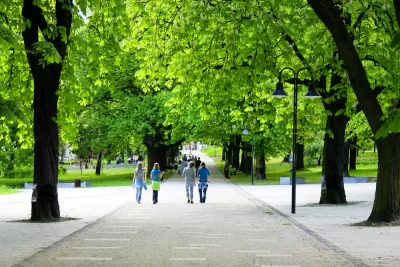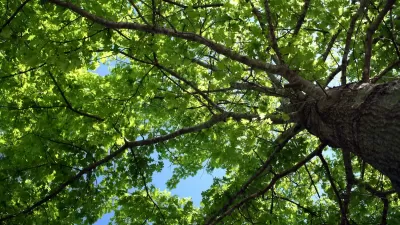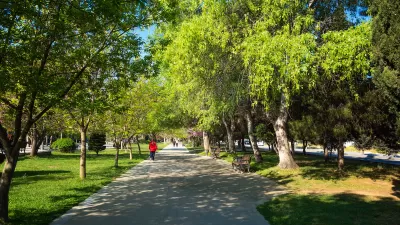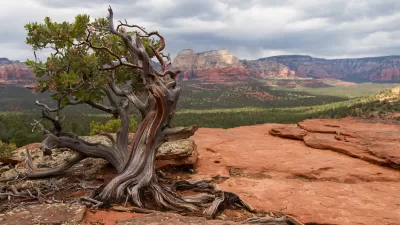Ambitious campaigns to plant trees in urban areas often don't take into account the complexities of growing and maintaining effective urban forests.

Around the world, pledges to plant more trees in cities have taken off as a perceived "feel-good cure-all for global warming. In the U.S., conservative leaders like former President Donald Trump have touted tree-planting while working to eliminate emissions regulations." But the reality of planting trees is more complicated, write Feargus O'Sullivan and Linda Poon.
"Popular campaigns to plant 1 million trees are announced to much fanfare in cities from London to Los Angeles to Phoenix, Arizona, but often fall short of their goals. Many trees don’t survive, or thrive, or deliver their promised benefits." Although "[t]here is good reason for the enthusiasm around planting trees," including carbon storage and their ability to mitigate the effects of urban heat islands and pollution, "planting a massive number of trees is not necessarily a positive investment if not enough of them survive to become mature plants." Tree planting also comes with its own carbon cost, "meaning that trees have to survive years before they offset that cost. The largest environmental gain comes when trees mature, sometimes decades after they’re planted."
The article details the lackluster performances of programs in Copenhagen and Los Angeles, where tree planting efforts ran up against a variety of unexpected challenges. According to U.S. Forest Service researcher Lara Roman,"[i]t’s not just about planting a million trees. It’s about planting and taking care of a million, and in the right places." For example, "non-native species can be the best choices in cities, where intense human activity has to an extent estranged climates from their broader surroundings."
"That’s why if cities really want to measure the success of their tree programs, they need to factor in the maturity and types of trees" by measuring tree canopy and planting diverse, resilient species.
FULL STORY: The Darker Side of Tree-Planting Pledges

Study: Maui’s Plan to Convert Vacation Rentals to Long-Term Housing Could Cause Nearly $1 Billion Economic Loss
The plan would reduce visitor accommodation by 25,% resulting in 1,900 jobs lost.

North Texas Transit Leaders Tout Benefits of TOD for Growing Region
At a summit focused on transit-oriented development, policymakers discussed how North Texas’ expanded light rail system can serve as a tool for economic growth.

Why Should We Subsidize Public Transportation?
Many public transit agencies face financial stress due to rising costs, declining fare revenue, and declining subsidies. Transit advocates must provide a strong business case for increasing public transit funding.

How to Make US Trains Faster
Changes to boarding platforms and a switch to electric trains could improve U.S. passenger rail service without the added cost of high-speed rail.

Columbia’s Revitalized ‘Loop’ Is a Hub for Local Entrepreneurs
A focus on small businesses is helping a commercial corridor in Columbia, Missouri thrive.

Invasive Insect Threatens Minnesota’s Ash Forests
The Emerald Ash Borer is a rapidly spreading invasive pest threatening Minnesota’s ash trees, and homeowners are encouraged to plant diverse replacement species, avoid moving ash firewood, and monitor for signs of infestation.
Urban Design for Planners 1: Software Tools
This six-course series explores essential urban design concepts using open source software and equips planners with the tools they need to participate fully in the urban design process.
Planning for Universal Design
Learn the tools for implementing Universal Design in planning regulations.
Ascent Environmental
Borough of Carlisle
Institute for Housing and Urban Development Studies (IHS)
City of Grandview
Harvard GSD Executive Education
Toledo-Lucas County Plan Commissions
Salt Lake City
NYU Wagner Graduate School of Public Service





























